Enrico Blanzieri
A weighted quantum ensemble of homogeneous quantum classifiers
Jun 09, 2025Abstract:Ensemble methods in machine learning aim to improve prediction accuracy by combining multiple models. This is achieved by ensuring diversity among predictors to capture different data aspects. Homogeneous ensembles use identical models, achieving diversity through different data subsets, and weighted-average ensembles assign higher influence to more accurate models through a weight learning procedure. We propose a method to achieve a weighted homogeneous quantum ensemble using quantum classifiers with indexing registers for data encoding. This approach leverages instance-based quantum classifiers, enabling feature and training point subsampling through superposition and controlled unitaries, and allowing for a quantum-parallel execution of diverse internal classifiers with different data compositions in superposition. The method integrates a learning process involving circuit execution and classical weight optimization, for a trained ensemble execution with weights encoded in the circuit at test-time. Empirical evaluation demonstrate the effectiveness of the proposed method, offering insights into its performance.
Local Binary and Multiclass SVMs Trained on a Quantum Annealer
Mar 13, 2024



Abstract:Support vector machines (SVMs) are widely used machine learning models (e.g., in remote sensing), with formulations for both classification and regression tasks. In the last years, with the advent of working quantum annealers, hybrid SVM models characterised by quantum training and classical execution have been introduced. These models have demonstrated comparable performance to their classical counterparts. However, they are limited in the training set size due to the restricted connectivity of the current quantum annealers. Hence, to take advantage of large datasets (like those related to Earth observation), a strategy is required. In the classical domain, local SVMs, namely, SVMs trained on the data samples selected by a k-nearest neighbors model, have already proven successful. Here, the local application of quantum-trained SVM models is proposed and empirically assessed. In particular, this approach allows overcoming the constraints on the training set size of the quantum-trained models while enhancing their performance. In practice, the FaLK-SVM method, designed for efficient local SVMs, has been combined with quantum-trained SVM models for binary and multiclass classification. In addition, for comparison, FaLK-SVM has been interfaced for the first time with a classical single-step multiclass SVM model (CS SVM). Concerning the empirical evaluation, D-Wave's quantum annealers and real-world datasets taken from the remote sensing domain have been employed. The results have shown the effectiveness and scalability of the proposed approach, but also its practical applicability in a real-world large-scale scenario.
Towards socially-competent and culturally-adaptive artificial agents Expressive order, interactional disruptions and recovery strategies
Aug 06, 2023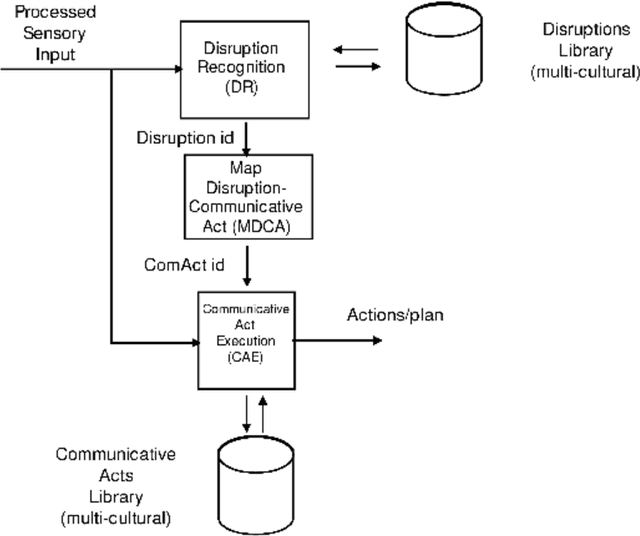
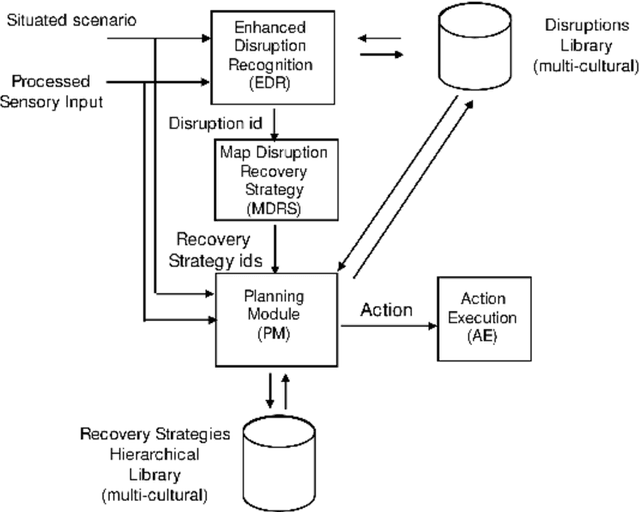
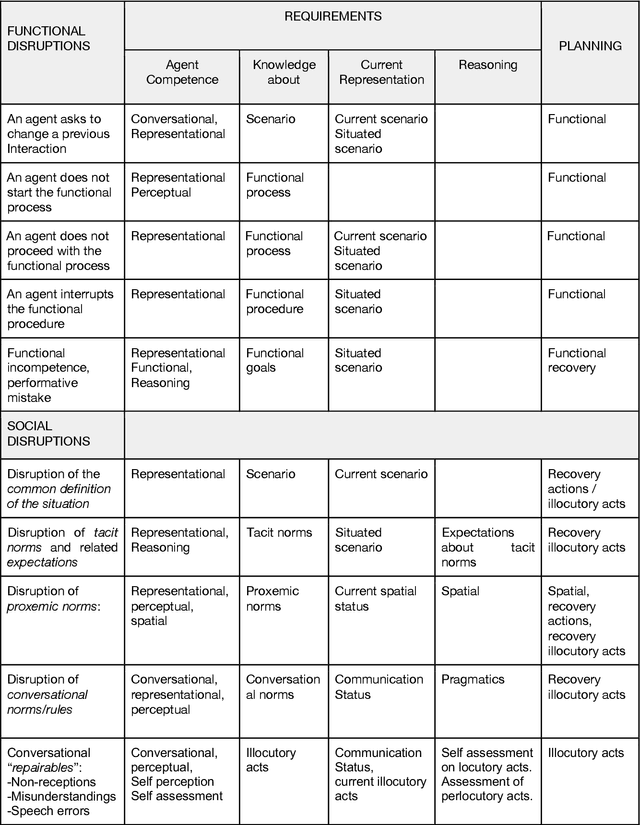
Abstract:The development of artificial agents for social interaction pushes to enrich robots with social skills and knowledge about (local) social norms. One possibility is to distinguish the expressive and the functional orders during a human-robot interaction. The overarching aim of this work is to set a framework to make the artificial agent socially-competent beyond dyadic interaction-interaction in varying multi-party social situations-and beyond individual-based user personalization, thereby enlarging the current conception of "culturally-adaptive". The core idea is to provide the artificial agent with the capability to handle different kinds of interactional disruptions, and associated recovery strategies, in microsociology. The result is obtained by classifying functional and social disruptions, and by investigating the requirements a robot's architecture should satisfy to exploit such knowledge. The paper also highlights how this level of competence is achieved by focusing on just three dimensions: (i) social capability, (ii) relational role, and (iii) proximity, leaving aside the further complexity of full-fledged human-human interactions. Without going into technical aspects, End-to-end Data-driven Architectures and Modular Architectures are discussed to evaluate the degree to which they can exploit this new set of social and cultural knowledge. Finally, a list of general requirements for such agents is proposed.
Very Simple Classifier: a Concept Binary Classifier toInvestigate Features Based on Subsampling and Localility
Sep 14, 2016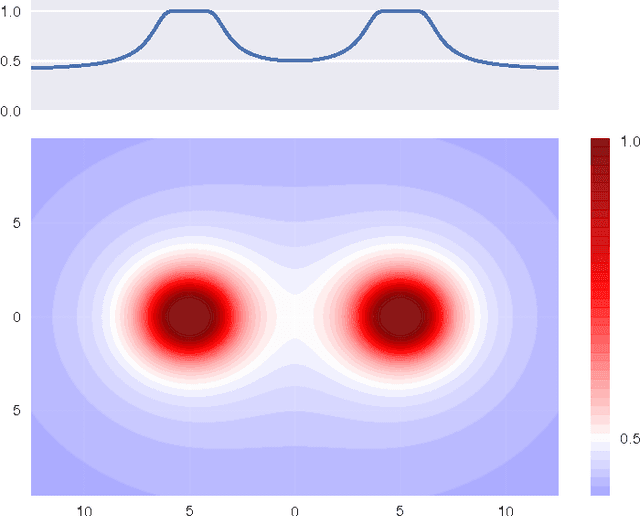
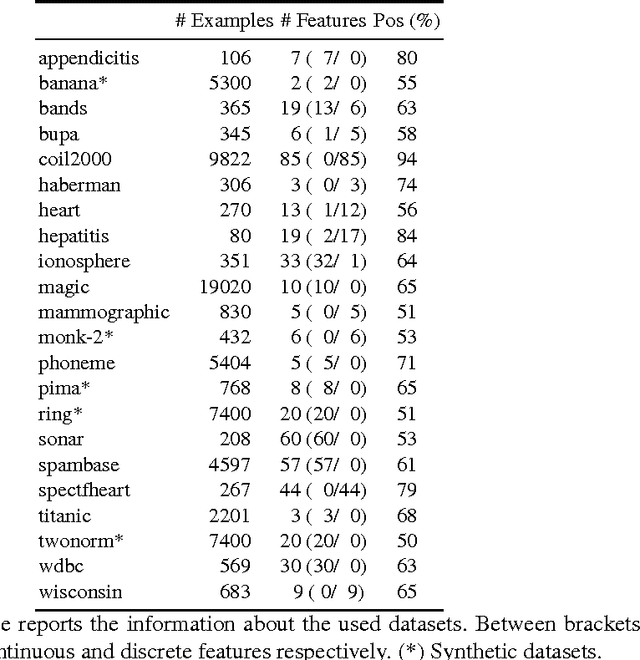
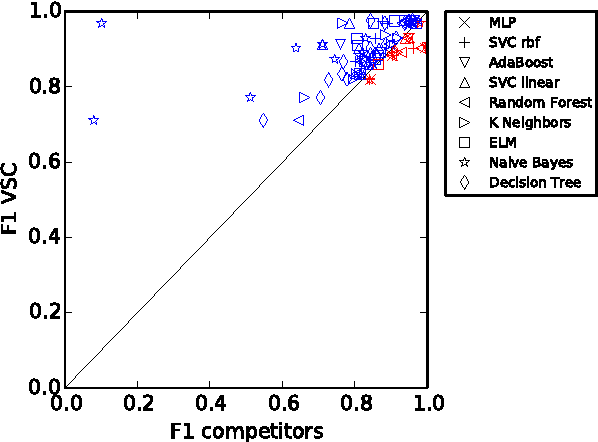
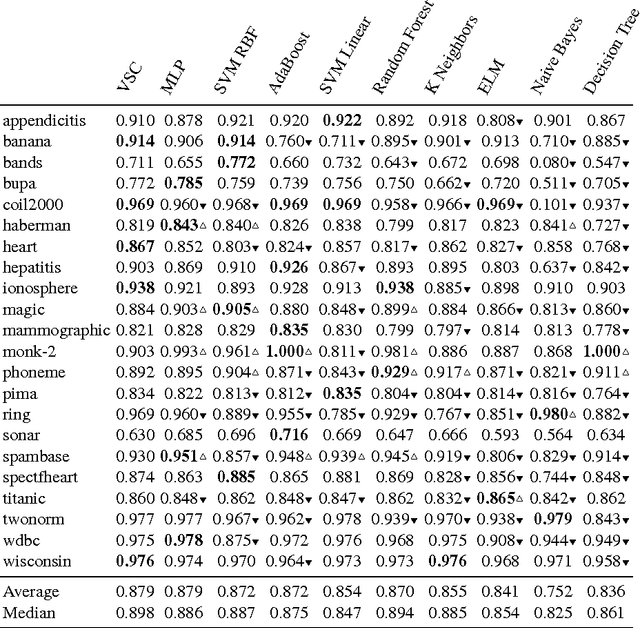
Abstract:We propose Very Simple Classifier (VSC) a novel method designed to incorporate the concepts of subsampling and locality in the definition of features to be used as the input of a perceptron. The rationale is that locality theoretically guarantees a bound on the generalization error. Each feature in VSC is a max-margin classifier built on randomly-selected pairs of samples. The locality in VSC is achieved by multiplying the value of the feature by a confidence measure that can be characterized in terms of the Chebichev inequality. The output of the layer is then fed in a output layer of neurons. The weights of the output layer are then determined by a regularized pseudoinverse. Extensive comparison of VSC against 9 competitors in the task of binary classification is carried out. Results on 22 benchmark datasets with fixed parameters show that VSC is competitive with the Multi Layer Perceptron (MLP) and outperforms the other competitors. An exploration of the parameter space shows VSC can outperform MLP.
 Add to Chrome
Add to Chrome Add to Firefox
Add to Firefox Add to Edge
Add to Edge